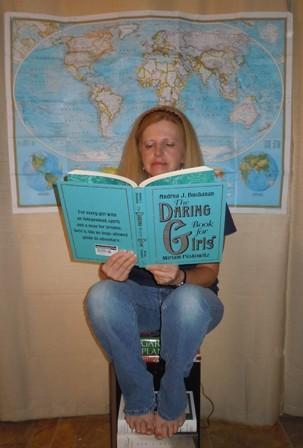Spatial Awareness By Cheryl Hughes
Try this experiment: Stack four boxes, one on top of the other. Now put a ball—any ball will do—in the third box. Did you count from the top down or from the bottom up? I devised this completely non-scientific test after I sent my granddaughter into the utility room for Borax that was located on the third shelf of the shelving unit.
“There isn’t any Borax on the third shelf,” she yelled back to me.
“Of course there is,” I said, as I walked into the utility room and grabbed the box. “One, two, three,” I counted from the top down, “Third shelf.”
“Oh,” she said, “I counted from the bottom up.”
According to pgpedia.com, “Spatial awareness is a complex cognitive skill that requires an organization of the knowledge of objects in relation to oneself as well as in relation to each other.”
The next day at work, I began to think about this concept and the difference in people’s thought processes, and I devised the box experiment in order to find out what most people would do if I gave them an object—I used a bottle of Super Glue, there wasn’t a ball close to hand—and told them to put it in the third out of four boxes stacked on top of one another. The results were split fifty/fifty—half of the people who participated counted from the top down and half from the bottom up.
I tried to see a pattern. I asked the participants if they were numbers people or words people. I took into account if they were male or female, young or old, blue collar or white collar workers. It didn’t seem to matter. No one group of people fell into either counting group. I discussed this puzzle with Melanie, one of our customers who had counted from the top down.
“I think the reason I counted from the top down is because I was thinking access to the box. Maybe people who count from the bottom up are thinking construction of the group of boxes, which would have to start at the bottom and build up.”
You know what? I think she figured it out.
(DISCLAIMER: I am going to make a generalization about men and women in the following paragraph. I realize you can’t really group all men or all women under a blanket statement.)
Melanie and I also discussed how some people can’t seem to find an object, whereas others can put their hands right on it. We concluded that a lot of men fall into the “can’t seem to find” group, and they depend heavily on the “put their hands right on it” group, which tends to be made up primarily of women. I think I have the reason for that figured out.
According to wales.nhs.uk, “To have good spatial awareness, you also need to understand and respond to a change in position from…objects,” and pgpedia.com points out that spatial awareness “…also involves understanding the relationship of objects as they change position.”
I think the reason a lot of men can’t find things that women can quickly locate is because men expect things to be where they left them or where they last saw them. Women tend to put things back where they belong. If we see a socket set lying on the kitchen counter, we put it back in the tool box. We pick up clothes that have been dropped onto the floor, and we put toys back into the toy box.
The other reason men can’t seem to find things is because they don’t believe in the second law of thermodynamics, which in a nutshell states that everything is moving toward chaos or generally falling apart. Women know this instinctively. We never go to the refrigerator, look on the second shelf then ask, “Where’s the ketchup?” If it’s not in its place on the second shelf, we look on the top shelf and the third shelf. We move things around until we locate it. We really don’t expect the ketchup or anything else, for that matter, to be where it’s supposed to be or to be where we left it. Since the day we got married, since the day we had children, since the day we began caring for aging parents, our world has been chaos. Stuff moves around, and as the experts conclude, good spatial awareness includes “understanding the relationship of objects as they change position.” If men go to the refrigerator, and the ketchup isn’t on the second shelf, they conclude they are out of ketchup.
My scientific conclusion is as follows:
Men expect order.
Women make order.



























